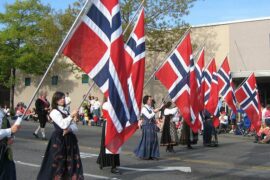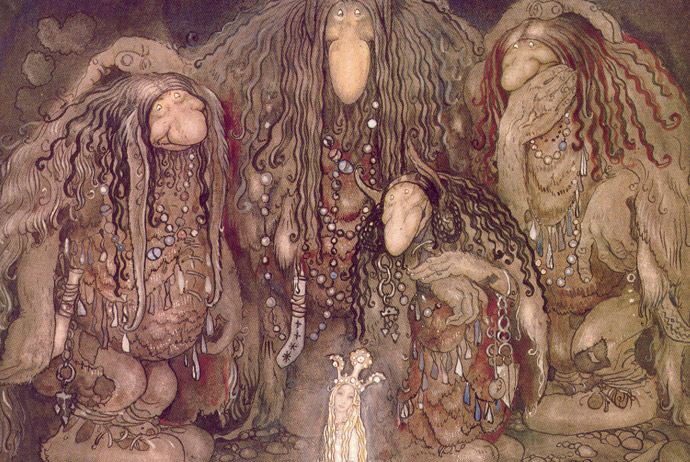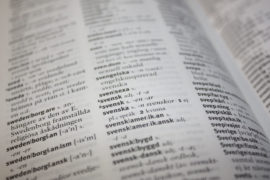Viking symbols and ancient Norse mythology are most definitely on trend at the moment, both for tattoos, on jewellery and in the movies.
But do you know your Vegvisir symbol from your Valknut? And is the Vegvisir even a Viking symbol at all?
Read on to find out all about the Vegvisir symbol, its history and what it means.
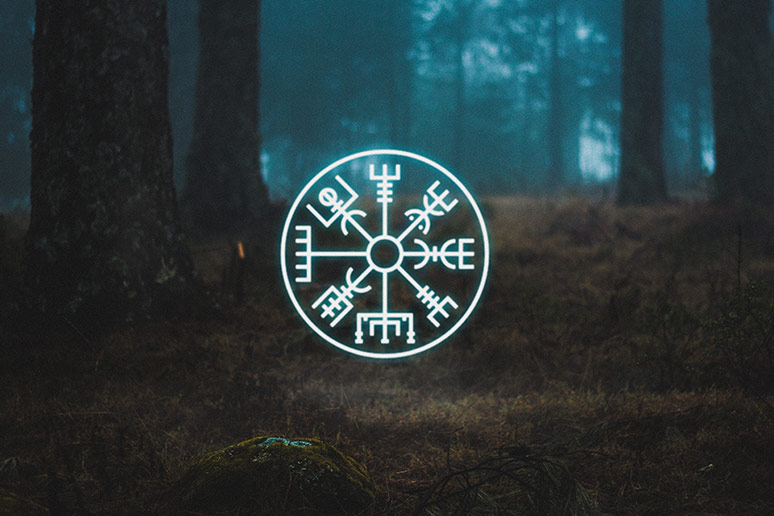
What is the Vegvisir symbol?
The Vegvisir is traditionally thought of as an ancient Norse symbol that is also known as the Viking compass.
The symbol is made up of eight Viking rune staves radiating out in a circle from a central point.
What does the Vegvisir symbol mean?
The word Vegvisir means “way finder” or “signpost” in Icelandic and the Vegvisir symbol is supposed to give guidance and protection.
Tradition has it that the ancient Norse people believed that wearing a Vegvisir symbol would help them to find their way back home safely, and Viking ships were thought to bear the Vegvisir to ensure a successful homecoming.
What’s the history of the symbol?
Today, the Vegvisir is closely associated with the Vikings and the ancient Norse people.
However, the first recorded depiction and description of it is in the Icelandic Huld Manuscript, which was written in 1860 – several hundred years after the Viking age.
The manuscript was written in Icelandic by Geir Vigfússon, and states “If this sign, called the Vegvisir (way-shower, or way pointer), is carried, one will never lose one’s way in storms or bad weather, even when the way is not known”.
There are no known depictions of the Vegvisir before this date: the symbol has not been found on any Viking rune stones or cave drawings, nor has any Viking jewellery ever been excavated that depicts it.
Since plenty of other Viking symbols have been found on rune stones and carved into Viking jewellery, it seems unlikely that the Vegvisir was widely used in Viking times.

Is the Vegvisir pagan?
An image similar to the Vegvisir is depicted in a 15th-century English document called Solomon’s Testament in the Harley Manuscript (now part of the British Museum’s collection in London). Some people use this to attach Christian significance to the Vegvisir.
However, the images depicted in Solomon’s Testament look more like the Helm of Awe than the Vegvisir, and similar symbols have never been found in any Christian churches or other religious documents, so it seems unlikely that it has a Christian origin.
Neo-pagan groups (like Norse pagans) also claim the Vegvisir as a popular symbol, while others attach a magical mysticism to it.
So how old is the Vegvisir?
If you believe that the Vegvisir is indeed a true ancient Norse symbol and that it dates from the Viking era (around 800–1066), that would make it between 1400 and 1200 years old.
If, however – as is much more likely – you date it from its first published mention in Vigfússon’s Huld manuscript, it’s a mere 162 years old!
Vegvisir pronounciation
The most common way of pronouncing Vegvisir is “vague vee seer”, with the stress on the first syllable. To hear some real-life examples of the word being pronounced, check out the video below.
Vegvisir tattoos
Vegvisir tattoos are incredibly popular at the moment, perhaps because of the influence of the Marvel superhero films and the Vikings TV series.
It could also be because the Vegvisir has a simple, stylish graphic image that looks good as a tattoo, or perhaps because of its significance of endowing protection and a safe homecoming on the wearer.
The Icelandic singer/songwriter Bjork has said that she chose the Vegvisir as a tattoo on her arm so that she would always be able to find her way safely back to Iceland.

Some people opt for more elaborate Viking-influenced tattoos, such the Yggdrasil Vegvisir tattoo, that combines two of the most popular Norse symbols, the Vegvisir and the Yggdrasil (or tree of life) symbol.
For more on popular Norse tattoos, and their meanings, check out our guide to Nordic and Viking tattoos, with examples and inspiration.
How to draw a Vegvisir
Possibly one of the reasons why the Vegvisir is such a popular graphic for a tattoo is that its standout design is fairly simple but stylish and it works just as well as a small discreet ankle tattoo or a large full-back image.
The basic Vegvisir is made up of eight staves that radiate out from a central circle. At the end of these staves is a combination of lines that make up a Runic symbol, each one slightly different.
For a detailed guide on how to draw a Vegvisir, check out this clip below.
What do the symbols in and around the Vegvisir mean?
The original Vegvisir as depicted in the Huld manuscript is the simple symbol with the four diagonal staves slightly longer so that they fit within a square outline.
Sometimes, however, the Vegvisir is drawn inside a ring of symbols that surrounds the central image, with the eight staves all the same length so that they fit within the circle.
So, what does it say around the Vegvisir?
Since the runes in the circle around the Vegvisir are not in Huld’s original design there is no right or wrong way to draw them.
Sometimes they are shown as simply the Runic alphabet in a circle around the symbol, sometimes they are written as the phrase “not all who wander are lost”.
But, the simple answer is that there is no correct way to draw the surrounding runes and you can interpret them as you will!
What is a Vegvisir ring?
The popular Vegvisir ring, often made from silver such as this one, is a ring with the Vegvisir symbol engraved on it.
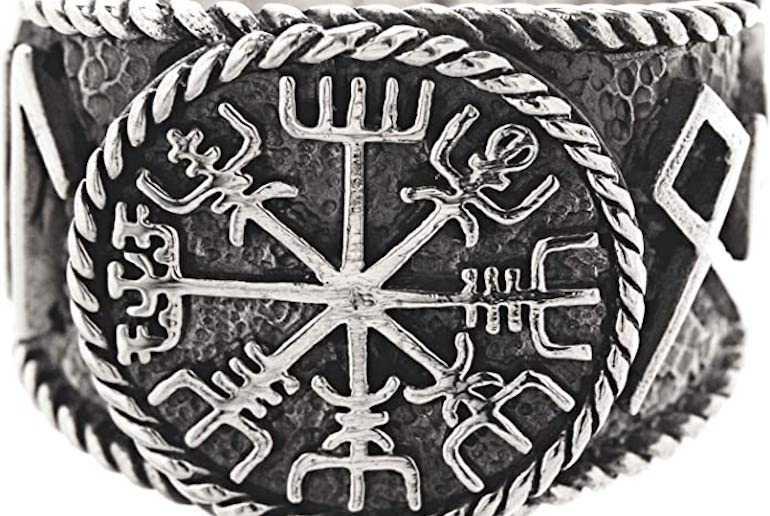
Some people have one as their wedding ring, since the Vegvisir symbol is supposed to give protection and bring the wearer home safely. There are even Viking bracelets featuring the symbol.
For more on Viking weddings and their traditions, see our post on Viking weddings.
See also:
Famous Vikings you should know about
Rune translator: see your name in runes
The coolest craziest Viking hairstyles
Nordic and Viking tattoos – examples and inspiration
Cool Viking names and their meanings



